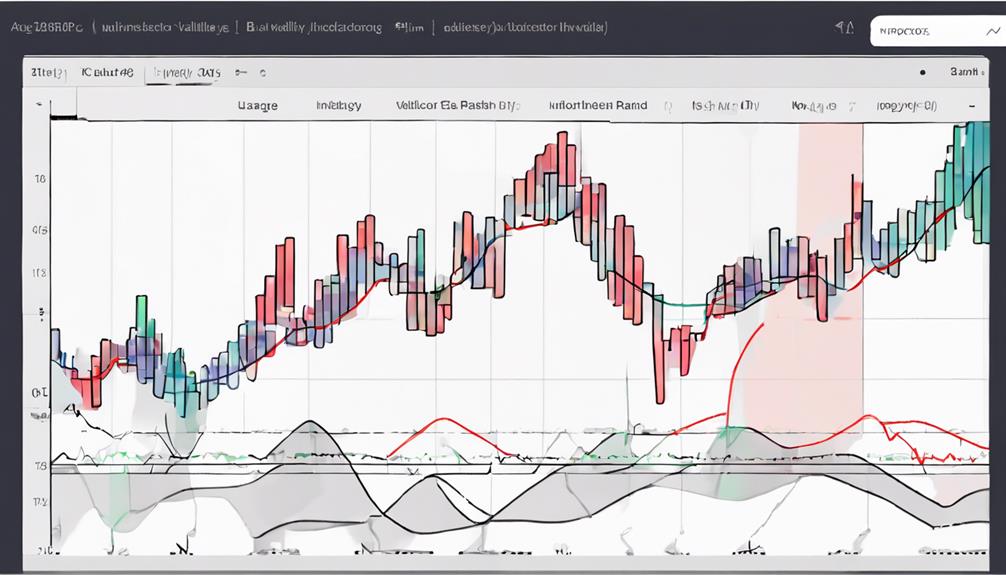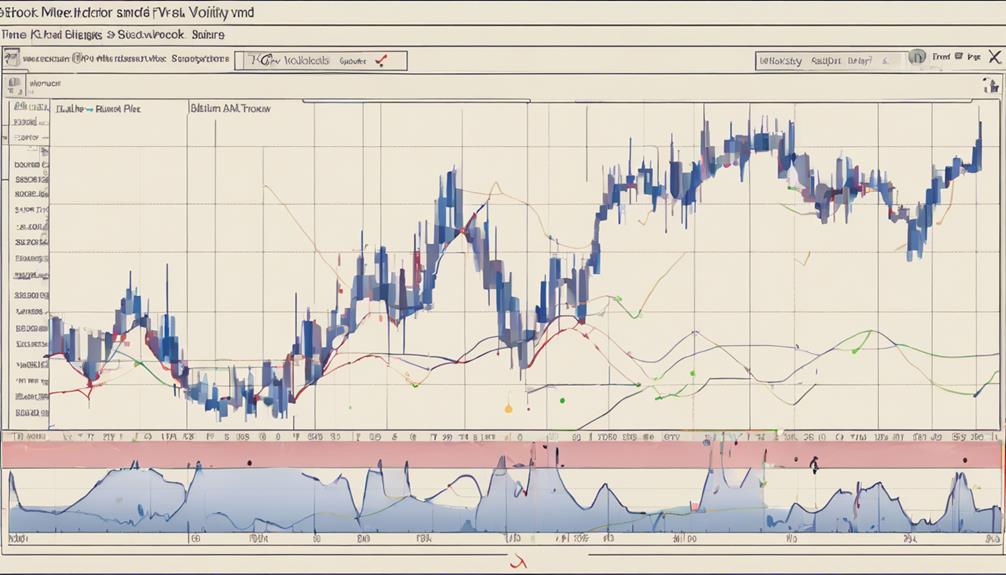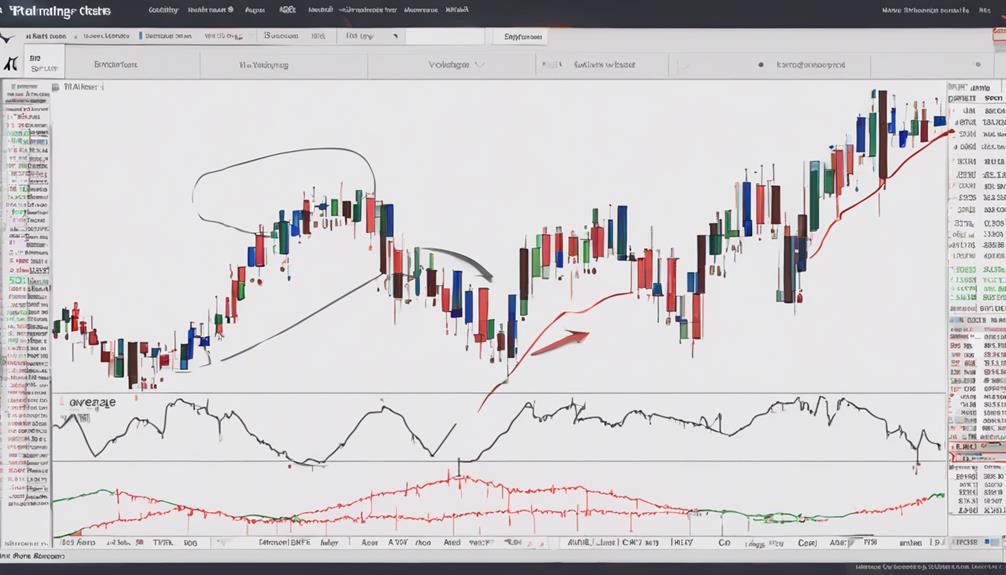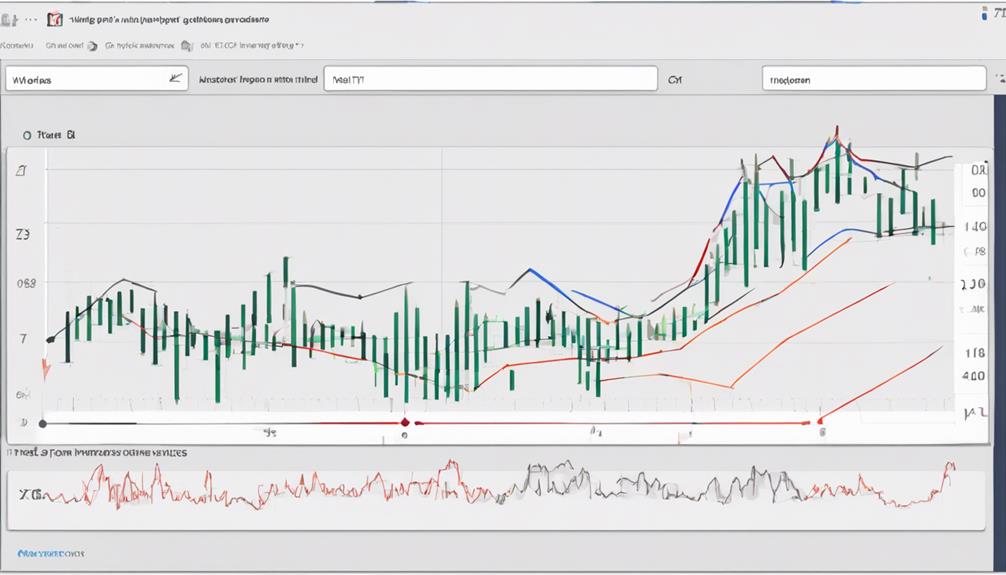Understanding the fundamental principles of Volatility Indicators is crucial for traders navigating dynamic market environments. By grasping the significance of these indicators such as Bollinger Bands, ATR, VIX, Keltner Channels, and Donchian Channels, traders can gain valuable insights into market behavior and potential price movements.
These tools serve as essential guides in formulating strategic decisions, but the key lies in interpreting their signals accurately. As we delve deeper into the intricacies of these indicators, we uncover a world where precision and timing can make all the difference in successful trading endeavors.
Importance of Volatility Indicators
Why are volatility indicators crucial in the realm of trading?
Volatility indicators are essential technical analysis tools that help traders assess market volatility, which is the degree of variation in price movements. By understanding market volatility through these indicators, traders can develop effective trading strategies, adjust their risk management techniques, and make informed decisions.
Volatility indicators play a vital role in identifying potential breakouts, trend reversals, and the strength of a trend, allowing traders to adapt their positions accordingly. Moreover, these tools assist traders in setting appropriate stop-loss orders to limit potential losses and protect profits.
Types of Volatility Indicators

Various types of volatility indicators are utilized in the realm of trading to assess market dynamics and aid in decision-making processes.
Bollinger Bands, for instance, use standard deviations to identify potential price breakouts and reversals, providing insights into market volatility levels.
Average True Range (ATR) measures the average range between high and low prices, assisting traders in setting stop-loss orders based on market volatility.
The Volatility Index (VIX) reflects market sentiment and expectations of future volatility, aiding in risk assessment and trade decisions.
Keltner Channels utilize average true range to determine trends and potential reversals, offering valuable information on market volatility levels.
Donchian Channels track price highs and lows over a specific period, helping traders identify support and resistance levels as well as breakout opportunities.
These indicators play a crucial role in analyzing price action, determining support and resistance levels, understanding market sentiment, and making informed trading decisions based on the prevailing volatility conditions.
Interpreting Volatility Indicator Signals

Interpreting volatility indicator signals involves analyzing key metrics such as price movements, market sentiment, and trend reversals to make informed trading decisions based on prevailing volatility conditions. When interpreting these signals, traders consider various factors such as:
- Overbought and Oversold Conditions: Volatility indicators can help identify when a financial instrument is overbought or oversold, indicating potential reversal points in the market trends.
- Time Frame: Different volatility indicators may be more suitable for specific time frames, such as short-term or long-term trading strategies, allowing traders to adapt their approach accordingly.
- Potential Breakout: Volatility indicators can highlight periods of increased market volatility, suggesting potential breakout opportunities where prices may move significantly in one direction.
- Trading Signals: By combining multiple volatility indicators or using them in conjunction with other technical analysis tools, traders can generate trading signals that help them navigate volatile market conditions more effectively.
Using Volatility Indicators in Trading

Utilizing volatility indicators in trading enhances risk management and aids in identifying potential market trends and price movements. These technical analysis indicators play a crucial role in determining optimal trade entry and exit points, particularly in different time frames.
By analyzing volatility levels, traders can adapt their trading strategies to suit market conditions, helping them avoid potential losses and capitalize on opportunities. Volatility indicators also provide insights into market sentiment through metrics such as the fear index, guiding traders in making informed buy or sell decisions.
Setting appropriate stop-loss orders based on volatility can improve overall trading performance, especially during periods of low volatility where price movements may be limited. Incorporating volatility indicators into a trading strategy can lead to more precise and strategic decision-making, ultimately enhancing the effectiveness of trades executed in the market.
Common Mistakes to Avoid With Volatility Indicators

When utilizing volatility indicators in trading, it is crucial to be aware of common mistakes to avoid for effective risk management and decision-making. Volatility indicators can be a powerful tool for traders to take advantage of the degree of variation in asset prices and predict potential future price movements.
However, to make the most of these indicators and avoid pitfalls, consider the following:
- Avoid relying solely on one volatility indicator: Using multiple indicators can provide a more comprehensive analysis and increase the accuracy of your trading decisions.
- Do not overlook the importance of combining multiple indicators: Confirm signals by cross-referencing different volatility indicators to reduce the risk of false alarms and ensure more reliable insights.
- Avoid ignoring the market context and fundamental factors: Consider external influences such as news events and market conditions when interpreting volatility indicator signals to make more informed trading choices.
- Don't make impulsive decisions: While volatility indicators can be an effective tool, always have proper risk management strategies in place to prevent impulsive trades solely based on indicator readings.
Can Beginners Use Volatility Indicators in Futures Trading?
Yes, beginners can use futures trading volatility indicators to make informed decisions. Volatility indicators help in assessing the stability of the market, which is crucial for a beginner to understand. By tracking these indicators, newcomers can gain valuable insights into the direction of the futures market and make strategic trading decisions.
Frequently Asked Questions
What Are the Indicators That Measure Volatility?
Key volatility indicators include Bollinger Bands for standard deviation around a moving average, Average True Range (ATR) for price fluctuation, Volatility Index (VIX) for market sentiment, Keltner Channels for trend identification, and Donchian Channels for breakouts.
What Is Volatility for Dummies?
Volatility, in simple terms, is the rollercoaster ride of price changes in financial markets. It represents the turbulence and unpredictability of asset values. Understanding this concept is essential for navigating risks and making informed trading decisions.
How Would You Measure Volatility in a Very Simple Way?
To measure volatility simply, consider using the Average True Range indicator. This tool calculates volatility by analyzing high, low, and close prices. Higher values suggest increased volatility, aiding in setting effective stop-loss levels for strategic trading decisions.
What Is the Introduction of Volatility?
Volatility, in finance, describes the degree of price fluctuation in a financial instrument or market. It indicates risk and uncertainty levels, influenced by economic factors and events. Traders employ volatility indicators to assess market conditions and manage risk effectively.
Conclusion
In conclusion, the significance of volatility indicators lies in their ability to provide traders with crucial insights into market dynamics and trends. By effectively utilizing these indicators, traders can enhance their decision-making process, manage risk, and capitalize on potential opportunities in the market.
However, it is imperative to remain vigilant and avoid common pitfalls when interpreting volatility signals. Through a disciplined approach and a thorough understanding of volatility indicators, traders can navigate the complexities of the market with precision and confidence.
